
How to Use Respeaker 2-Mics Pi HAT V2.0: Examples, Pinouts, and Specs
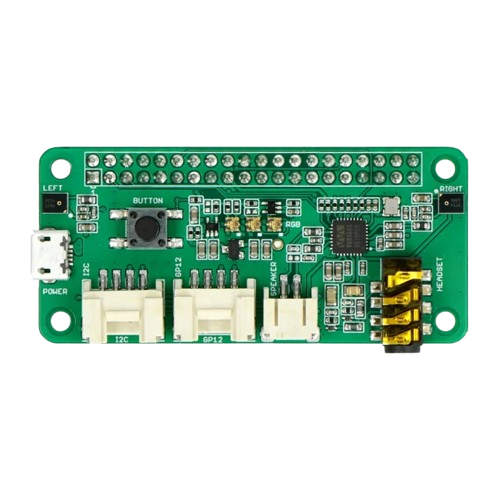
 Design with Respeaker 2-Mics Pi HAT V2.0 in Cirkit Designer
Design with Respeaker 2-Mics Pi HAT V2.0 in Cirkit DesignerIntroduction
The Respeaker 2-Mics Pi HAT V2.0, developed by Seeed Studio, is a hardware add-on designed for Raspberry Pi boards. It features two high-quality microphones optimized for voice recognition and audio processing. This HAT (Hardware Attached on Top) is ideal for building voice-controlled applications, sound detection systems, and audio recording projects. Its compact design and plug-and-play compatibility make it a popular choice for developers working on voice assistant projects or IoT devices.
Explore Projects Built with Respeaker 2-Mics Pi HAT V2.0
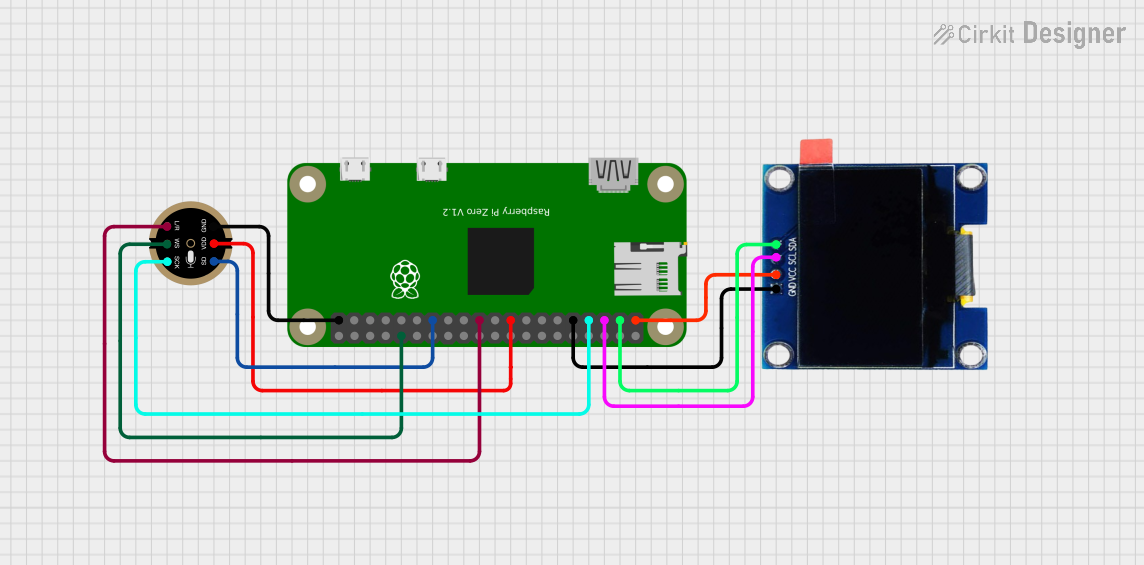
 Open Project in Cirkit Designer
Open Project in Cirkit Designer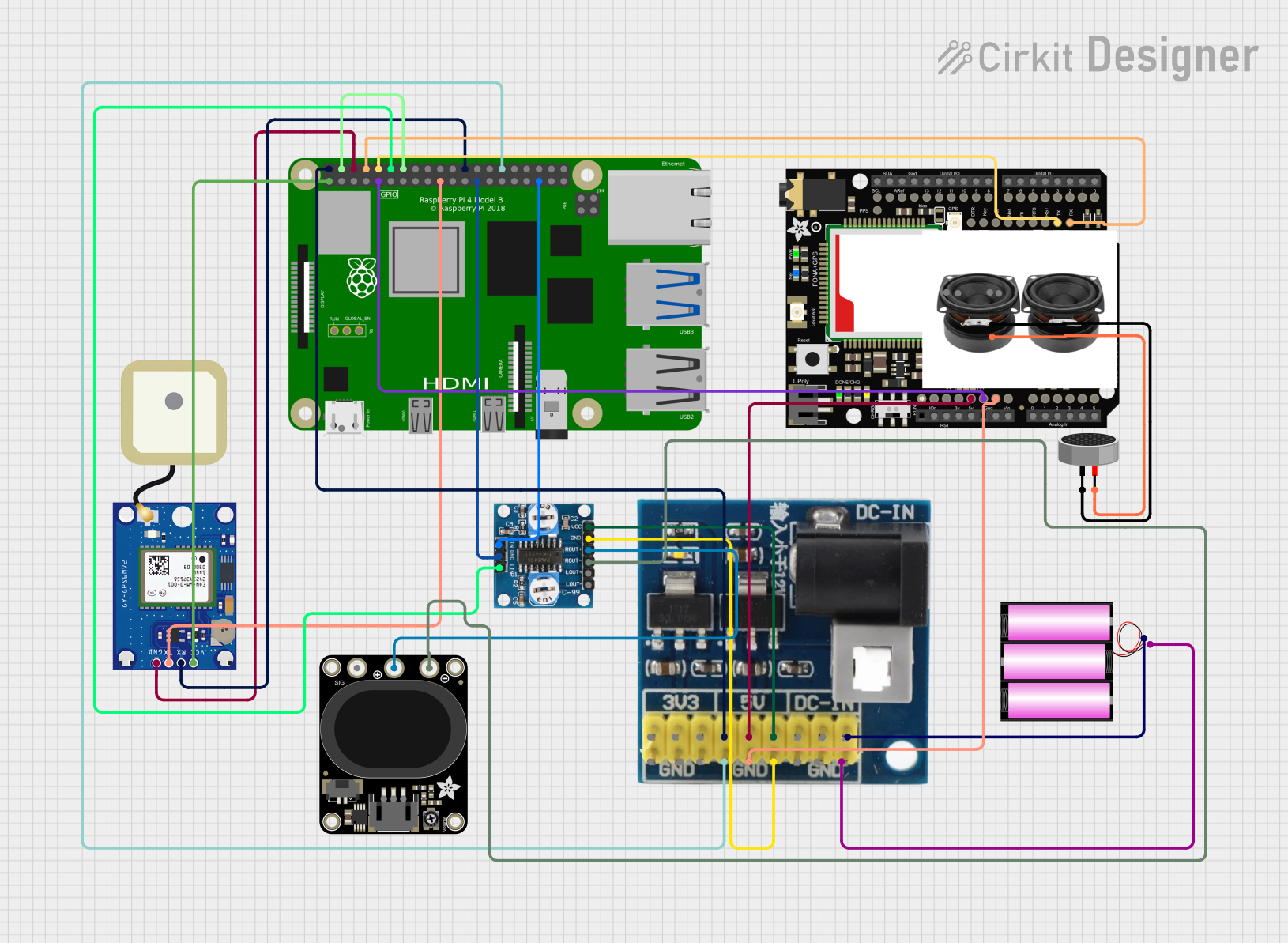
 Open Project in Cirkit Designer
Open Project in Cirkit Designer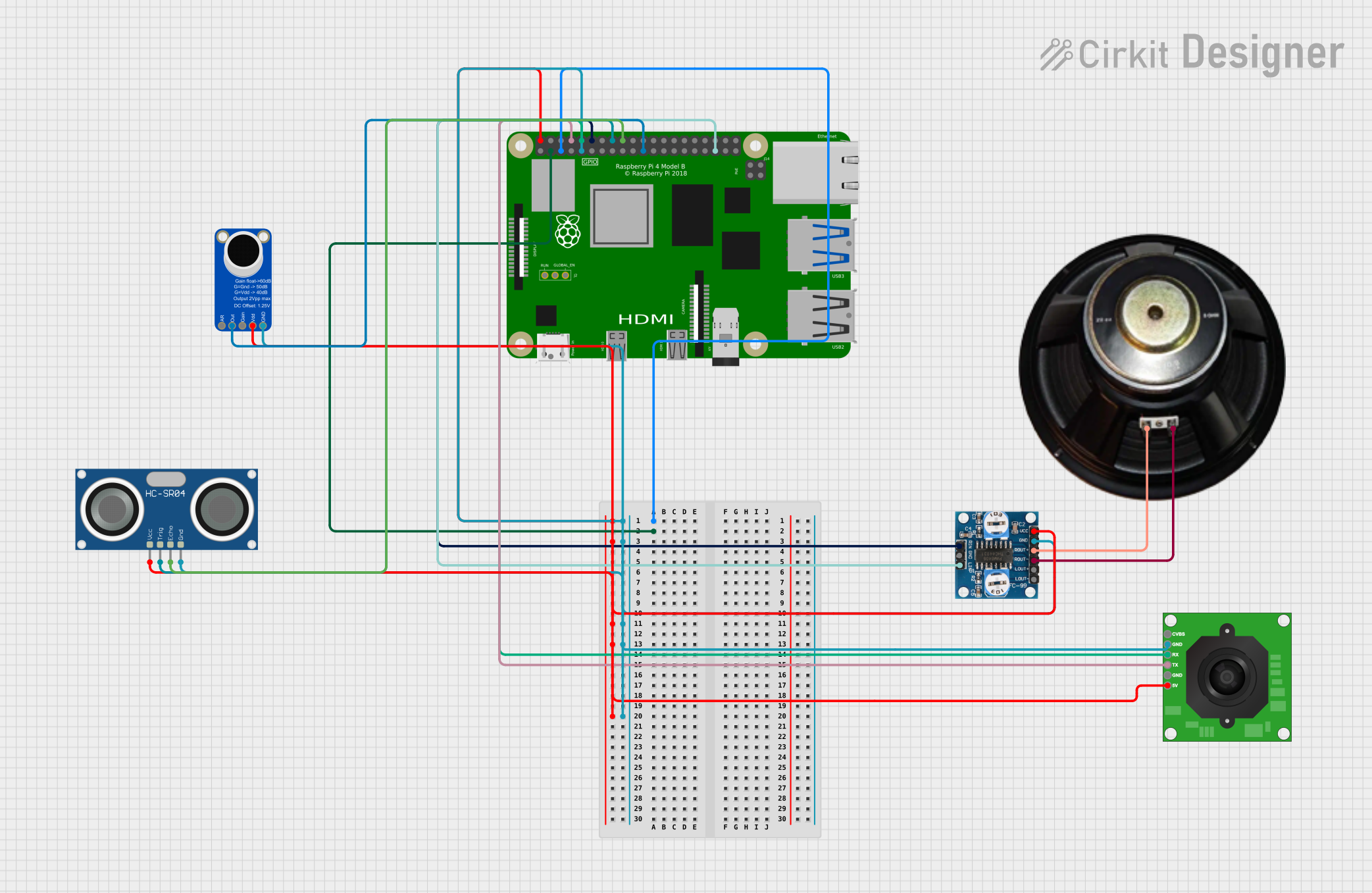
 Open Project in Cirkit Designer
Open Project in Cirkit Designer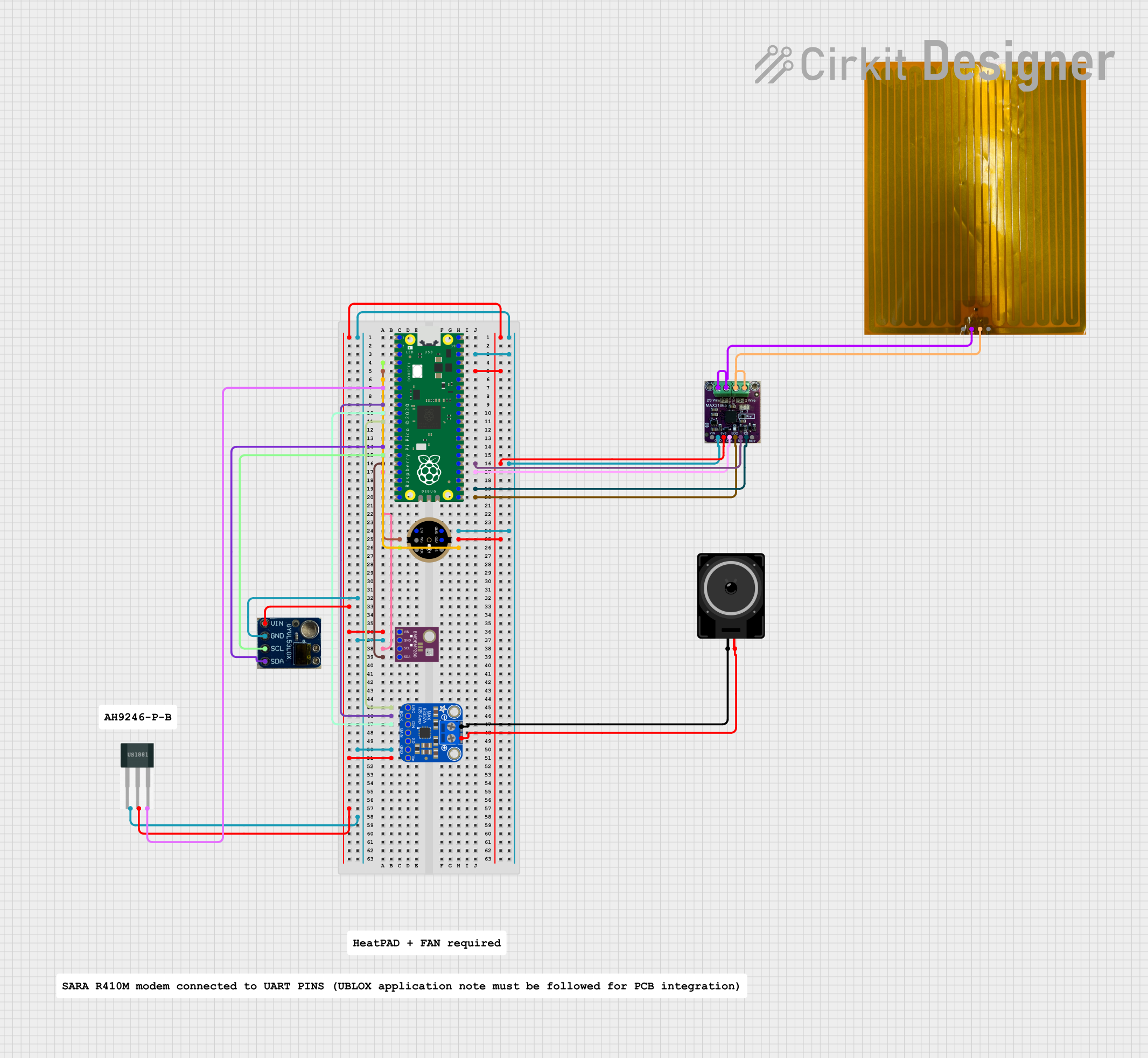
 Open Project in Cirkit Designer
Open Project in Cirkit DesignerExplore Projects Built with Respeaker 2-Mics Pi HAT V2.0

 Open Project in Cirkit Designer
Open Project in Cirkit Designer
 Open Project in Cirkit Designer
Open Project in Cirkit Designer
 Open Project in Cirkit Designer
Open Project in Cirkit Designer
 Open Project in Cirkit Designer
Open Project in Cirkit DesignerCommon Applications and Use Cases
- Voice-controlled assistants (e.g., Alexa, Google Assistant)
- Sound localization and detection systems
- Audio recording and processing
- Smart home automation
- IoT projects requiring voice input
Technical Specifications
The Respeaker 2-Mics Pi HAT V2.0 is designed to work seamlessly with Raspberry Pi boards. Below are its key technical details:
Key Technical Details
- Microphone Type: Two MEMS microphones
- Audio Processing: Supports voice activity detection (VAD)
- Interface: I2S (Inter-IC Sound)
- Power Supply: Powered via Raspberry Pi GPIO header
- Dimensions: 65mm x 30mm
- Operating Voltage: 3.3V (via GPIO)
- Compatibility: Raspberry Pi 4, 3B+, 3B, Zero, Zero W, and other models with a 40-pin GPIO header
Pin Configuration and Descriptions
The Respeaker 2-Mics Pi HAT V2.0 connects directly to the Raspberry Pi's 40-pin GPIO header. Below is the pin configuration:
| Pin | Name | Description |
|---|---|---|
| 1 | 3.3V | Power supply for the HAT |
| 2 | 5V | Power supply for the Raspberry Pi |
| 3 | I2C SDA | I2C data line for communication |
| 5 | I2C SCL | I2C clock line for communication |
| 12 | I2S BCLK | Bit clock for I2S audio interface |
| 35 | I2S LRCLK | Left-right clock for I2S audio interface |
| 40 | I2S DIN | Data input for I2S audio interface |
| Other | Ground (GND) | Common ground connection |
Usage Instructions
How to Use the Component in a Circuit
- Attach the HAT: Align the Respeaker 2-Mics Pi HAT V2.0 with the Raspberry Pi's 40-pin GPIO header and press it down gently to ensure a secure connection.
- Install Required Software:
- Boot up your Raspberry Pi with an operating system (e.g., Raspberry Pi OS).
- Open a terminal and update the system:
sudo apt update && sudo apt upgrade - Install the necessary drivers and libraries for the HAT:
sudo apt install git git clone https://github.com/respeaker/seeed-voicecard.git cd seeed-voicecard sudo ./install.sh - Reboot the Raspberry Pi to apply changes:
sudo reboot
- Test the Microphones:
- After rebooting, verify the microphones are working by recording audio:
arecord -D hw:1,0 -f cd test.wav - Play back the recorded audio:
aplay test.wav
- After rebooting, verify the microphones are working by recording audio:
Important Considerations and Best Practices
- Ensure the HAT is properly aligned with the GPIO header to avoid damaging the pins.
- Use a compatible Raspberry Pi power supply to ensure stable operation.
- Avoid placing the HAT in environments with excessive noise or vibration for accurate voice recognition.
- Regularly update the software and drivers to maintain compatibility with the latest Raspberry Pi OS.
Example Code for Raspberry Pi
Below is an example Python script to capture audio using the Respeaker 2-Mics Pi HAT V2.0:
import os
Record audio using arecord command
The '-D hw:1,0' specifies the hardware device for the microphone
The '-f cd' sets the format to CD quality (16-bit, 44.1kHz, stereo)
os.system("arecord -D hw:1,0 -f cd -d 5 test.wav")
print("Audio recording complete. Playing back the recorded audio...")
Play back the recorded audio using aplay command
os.system("aplay test.wav")
Troubleshooting and FAQs
Common Issues and Solutions
Microphones Not Detected:
- Cause: Drivers not installed or improperly configured.
- Solution: Reinstall the drivers using the installation script:
cd seeed-voicecard sudo ./install.sh
No Audio Output During Playback:
- Cause: Incorrect audio output device selected.
- Solution: Use the
alsamixercommand to configure the audio output device.
Poor Audio Quality:
- Cause: Environmental noise or incorrect microphone placement.
- Solution: Place the HAT in a quieter environment and ensure the microphones are unobstructed.
HAT Not Powering On:
- Cause: Improper connection to the GPIO header.
- Solution: Recheck the alignment of the HAT with the GPIO pins.
FAQs
Q: Can I use this HAT with Raspberry Pi Zero?
- A: Yes, the Respeaker 2-Mics Pi HAT V2.0 is compatible with Raspberry Pi Zero and Zero W.
Q: Does this HAT support stereo recording?
- A: No, the two microphones are used for beamforming and noise reduction, not stereo recording.
Q: Can I use this HAT for real-time voice recognition?
- A: Yes, it is optimized for real-time voice recognition when paired with appropriate software.
Q: How do I update the firmware for the HAT?
- A: The HAT does not require firmware updates. Ensure the drivers and software are up to date instead.
This concludes the documentation for the Respeaker 2-Mics Pi HAT V2.0. For further assistance, refer to the official Seeed Studio documentation or community forums.